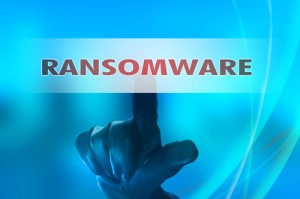Posted by Gregory M. Fliszar
on July 13, 2016
HHS,
OCR /
No Comments
 In response to the increasing prevalence of ransomware cyber-attacks by hackers on electronic health information systems in hospitals and medical practices, the Department of Health and Human Services (HHS) Office for Civil Rights (OCR) announced on Monday July 11, 2016 its publication of new HIPAA guidance on ransomware (“Ransomware Guidance”). According to OCR:
In response to the increasing prevalence of ransomware cyber-attacks by hackers on electronic health information systems in hospitals and medical practices, the Department of Health and Human Services (HHS) Office for Civil Rights (OCR) announced on Monday July 11, 2016 its publication of new HIPAA guidance on ransomware (“Ransomware Guidance”). According to OCR:
Ransomware is a type of malware (or malicious software) that encrypts data with a key known only to the hacker and makes the data inaccessible to authorized users. After the data is encrypted, the hacker demands that authorized users pay a ransom (usually in a cryptocurrency such as Bitcoin to maintain anonymity) in order to obtain a key to decrypt the data.
Notably, the HIPAA Security Rule already requires implementation of security measures to help covered entities and business associates prevent the introduction of malware (e.g., ransomware) into their systems, and to implement policies and procedures to assist in responding to ransomware attacks. The Ransomware Guidance addresses, among other areas, how to implement security measures in order to prevent, mitigate the chances of, or even recover from ransomware attacks. Not surprisingly, conducting a risk analysis (or risk assessment) is at the core of covered entities and business associates implementing security management processes as required by the HIPAA Security Rule. The Ransomware Guidance further notes that maintaining an overall contingency plan, as required by the Security Rule, that includes disaster recovery planning, emergency operations planning and frequent backups of data can also help covered entities and business associates respond to and recover from malware infections, including ransomware attacks.
In addition, the Ransomware Guidance states that ransomware attacks against a covered entity or business associate can be considered a breach under the HIPAA Rules. Specifically, the Ransomware Guidance provides, “[w]hen electronic protected health information (ePHI) is encrypted as the result of a ransomware attack, a breach has occurred because the ePHI encrypted by the ransomware was acquired (i.e. unauthorized individuals have taken possession or control of the information), and thus is a ‘disclosure’ not permitted under the HIPAA Privacy Rule.” Therefore, unless it can be shown that there is a low probability that the PHI involved in the ransomware attack has been compromised based on the factors in the Breach Notification Rule, a breach is presumed to have occurred, which would trigger the applicable breach notification provisions.
Even before OCR’s publication of the Ransomware Guidance, in late June the Secretary of HHS sent a letter (“Letter”) to the attention of chief executive officers at health care entities addressing the threat of ransomware. The Secretary attached interagency guidance to the Letter containing best practices and mitigation strategies integral to combatting ransomware incidents.
Ransomware is immediately disruptive to the day-to-day operation of businesses, as seen by its impact earlier this year on health care systems like MedStar in Washington, D.C. and Hollywood Presbyterian Medical Center in Los Angeles (“HPMC”), resulting for example, in HPMC paying 40 Bitcoins (approximately $17,000) to regain control of its computer system. Although the Ransomware Guidance does not address whether payment or ransom should be paid to regain access to computer systems, the interagency guidance attached to the Letter advises against paying hackers because, among other reasons, paying a ransom doesn’t necessarily guarantee that an entity will regain access to its system. The Ransomware Guidance does recommend that an entity victimized by a ransomware attack contact its local FBI or United States Secret Service field office.
For more information about the Ransomware Guidance contact Gregory M. Fliszar, Ryan Blaney, J. Nicole Martin or a member of Cozen O’Connor’s Health Law team.
About The Authors
Tags: attacks, best practice, bitcoin, Business Associate, covered entity, encrypt, guidance, hacker, HHS, HIPAA, HITECH, malicious, OCR, privacy, ransom, ransomware, security, software
Posted by Gregory M. Fliszar
on March 22, 2016
HHS,
OCR /
No Comments
The Department of Health and Human Services (HHS) Office of Civil Rights (OCR) finally announced on March 21 that it is ready to begin Phase Two of its HIPAA audit program, which will include business associates. These audits, mandated by HITECH, will primarily be comprised of desk audits, scheduled for completion by the end of December 2016, followed by onsite audits.
OCR explained it will immediately commence Phase Two by verifying, via email, cover entities’ and business associates’ contact information. The OCR is requesting timely responses, so that it can send pre-audit questionnaires out in order to gather data from covered entities and business associates for the creation of potential audit subject pools. The data will relate to the entities’ size, type and operations. Should covered entities and business associates fail to respond to OCR’s requests, they may still be part of OCR’s potential subject pools because OCR plans to compile publicly available information about covered entities and business associates that do not respond to its requests.
The first round of desk audits will focus on covered entities, and the second round will focus on business associates. The third round will be onsite audits, with a greater focus on the HIPAA requirements. OCR explains that some covered entities and business associates who are subject to desk audits may also be subject to onsite audits. According to OCR, all covered entities and business associates are eligible to be audited. The audits will focus on identifying compliance with specific privacy and security requirements under HIPAA/HITECH, and OCR will notify auditees by letter, regarding the subject(s) of their specific audits. On the HHS website, OCR provides a sample letter for review. Subsequent to the audits, OCR will review and analyze information from audit final reports.
Importantly, if an audit report uncovers significant noncompliance with HIPAA, it could prompt an investigation by OCR. The areas of interest for OCR in Phase Two will become clearer as the Phase Two audit program gets underway, but for now, we know OCR will focus on assessing covered entities’ and business associates’ HIPAA compliance, identifying best practices and discovering risks and vulnerabilities.
More information about the Phase Two audits is available here, and you can also contact Greg Fliszar, Ryan Blaney, J. Nicole Martin or another member of Cozen O’Connor’s Health Law team.
About The Authors
Tags: audit, best practice, Business Associate, Compliance, covered entity, HHS, HIPAA, HITECH, investigation, OCR, phase two, pre-audit, privacy, questionnaires, report, security, subject pool
Posted by Gregory M. Fliszar
on March 21, 2016
HHS,
OCR /
No Comments
 On consecutive days, the Office of Civil Rights (“OCR”) of the Department of Health and Human Services (“HHS”) recently announced two large HIPAA breach settlements. On March 16, 2016, OCR announced that it entered into a Resolution Agreement with North Memorial Health Care of Minnesota for $1.55 million plus a two-year corrective action plan. On March 17, 2016 OCR followed by announcing that Feinstein Institute for Medical research, a New York biomedical research institute, agreed to pay to OCR $3.9 million and enter into a three-year corrective action plan to settle potential HIPAA violations. Both cases resulted from the all too familiar scenario of breaches resulting from stolen, unencrypted laptops.
On consecutive days, the Office of Civil Rights (“OCR”) of the Department of Health and Human Services (“HHS”) recently announced two large HIPAA breach settlements. On March 16, 2016, OCR announced that it entered into a Resolution Agreement with North Memorial Health Care of Minnesota for $1.55 million plus a two-year corrective action plan. On March 17, 2016 OCR followed by announcing that Feinstein Institute for Medical research, a New York biomedical research institute, agreed to pay to OCR $3.9 million and enter into a three-year corrective action plan to settle potential HIPAA violations. Both cases resulted from the all too familiar scenario of breaches resulting from stolen, unencrypted laptops.
In the Minnesota hospital breach, the unencrypted laptop containing the PHI of over 9,000 individuals was stolen from the locked car of an employee of a business associate of the hospital. According to the OCR’s investigation, the hospital failed to have a business associate agreement in place with that particular business associate. OCR also alleged that the hospital had not previously performed a risk analysis to identify and address potential risks and vulnerabilities to the ePHI it maintained, accessed or transmitted.
In the New York research corporation breach, OCR alleged that the institution did not have policies and procedures in place, including a policy on encryption and one that addressed use and access of electronic devices (e.g., the removal of the devices from the institution’s facility), nor did it have in place a security management process that sufficiently addressed potential security risks and vulnerabilities to ePHI, namely, its confidentiality, vulnerability or integrity. Notably, the stolen, unencrypted laptop contained the PHI of approximately 13,000 individuals.
As above, both OCR settlements also include multiple year corrective action plans requiring the hospital and research facility to conduct risk analyses/assessments, train their employees, and have HIPAA compliant policies and procedures in place. The Resolution Agreement for the Minnesota hospital breach is available here, and the Resolution Agreement for the New York research institute breach is available here.
Takeaways: The OCR’s 2016 breach enforcement is off to a very strong start with two high dollar settlements. Lessons learned from both breaches include the significance of encrypting electronic devices, conducting and updating on a regular basis security risk assessments and analyses, having adequate safeguards in place to protect PHI, having business associate agreements with all business associates, and having and implementing HIPAA policies and procedures to protect the security and privacy of PHI, including for example, policies related to encryption, authorized access to ePHI/PHI, and removal of electronic devices from facilities.
For more information, contact Greg Fliszar, J. Nicole Martin, or a member of Cozen O’Connor’s Health Law team.
About The Authors
Tags: breach, Business Associate, Business Associate Agreement, corrective action plan, covered entity, encryption, ePHI, HHS, HIPAA, laptop, OCR, PHI, policies and procedures, resolution agreement, risk analysis, risk assessment, settlement, unencrypted
Posted by J. Nicole Martin
on November 20, 2015
Federal Trade Commission,
FTC,
HIPAA /
No Comments
 Last June we wrote about the FTC’s enforcement action against LabMD, a medical testing laboratory, which was forced to wind down its business because of the costs associated with challenging the FTC since 2013. Using its broad enforcement authority under Section 5 of the FTC Act, the FTC alleged that LabMD failed to “provide reasonable and appropriate security for personal information on its computer networks,” which the FTC claimed lead to the data of thousands of consumers being leaked.
Last June we wrote about the FTC’s enforcement action against LabMD, a medical testing laboratory, which was forced to wind down its business because of the costs associated with challenging the FTC since 2013. Using its broad enforcement authority under Section 5 of the FTC Act, the FTC alleged that LabMD failed to “provide reasonable and appropriate security for personal information on its computer networks,” which the FTC claimed lead to the data of thousands of consumers being leaked.
On November 13, 2015, Chief Administrative Law Judge D. Michael Chappell ruled in favor of LabMD, dismissing the FTC’s complaint because the FTC “fail[ed] to prove that [LabMD’s] alleged unreasonable data security caused, or is likely to cause, substantial consumer injury, as required by Section 5(n) of the FTC Act, [LabMD’s] alleged unreasonable data security cannot properly be declared an unfair act or practice in violation of Section 5(a) of the FTC Act.” Notably, Judge Chappell concluded that Continue reading…
About The Author
Tags: breach, ePHI, file sharing, HHS, OCR, peer-to-peer, practice, risk assessment, safeguards, security practices, unfair act
Posted by Gregory M. Fliszar
on May 04, 2015
HHS,
HIPAA,
OCR /
No Comments
 On April 27, 2015, the U.S. Department of Health and Human Services (“HHS”) Office for Civil Rights (“OCR”) announced that Cornell Prescription Pharmacy (“Cornell Pharmacy”) had entered into a resolution agreement to settle, without an admission of liability or wrongdoing, potential HIPAA violations. As part of the resolution agreement Cornell Pharmacy will pay $125,000 and enter into a two-year corrective action plan (“CAP”) focused on correcting the alleged deficiencies in its HIPAA compliance program.
On April 27, 2015, the U.S. Department of Health and Human Services (“HHS”) Office for Civil Rights (“OCR”) announced that Cornell Prescription Pharmacy (“Cornell Pharmacy”) had entered into a resolution agreement to settle, without an admission of liability or wrongdoing, potential HIPAA violations. As part of the resolution agreement Cornell Pharmacy will pay $125,000 and enter into a two-year corrective action plan (“CAP”) focused on correcting the alleged deficiencies in its HIPAA compliance program.
Cornell Pharmacy is a small, single store pharmacy located in Denver, Colorado that specializes in compound medications and providing services for local hospice agencies. OCR began an investigation into the pharmacy after it received a media report from a Denver news agency that protected health information (“PHI”) belonging to Cornell Pharmacy was apparently disposed of and found in an unlocked, publicly accessible dumpster. The documents were not shredded and contained the PHI of approximately 1,610 of Cornell Pharmacy’s patients. After conducting its investigation, OCR concluded that Cornell Pharmacy failed to implement any written policies and procedures as required by HIPAA’s Privacy Rule, and further failed to provide training on the Privacy Rule to its workforce members.
This settlement is instructive as OCR again highlights the importance of having updated and comprehensive HIPAA policies and procedures in place, including policies on the proper disposal of PHI, and on training all staff on those policies and procedures. Further, in this year of massive cyber-attacks and other breaches of electronic data, this HIPAA settlement serves to remind covered entities and business associates not to forget about protecting their paper records as well. As stated by OCR in its press release, “Even in our increasingly electronic world, it is critical that policies and procedures be in place for secure disposal of patient information, whether that information is in electronic form or on paper.” As discovered by Cornell Pharmacy, a breach or other improper disclosure of paper PHI can also result in significant consequences.
For further information please contact the author, Gregory M. Fliszar (Philadelphia, PA), or other members of Cozen O’Connor’s healthcare team.
About The Author
Tags: breach, Business Associate, covered entity, disclosure, disposal, HHS, HIPAA, OCR, Pharmacy, PHI, Privacy Rule, resolution agreement, settlement
Posted by Ryan Blaney
on September 26, 2014
ACA,
CMS,
HHS,
HIPAA,
HITECH,
Privacy /
No Comments

12,915 complaints were reported in 2013 to the Department of Health and Human Services Office of Civil Rights (“OCR”) according to Illiana L. Peters, Senior Adviser for HIPAA Compliance and Enforcement. Cozen O’Connor attended Ms. Peters’ presentation at the Safeguarding Health Information: Building Assurance through HIPAA Security conference on September 22-23, 2014. The conference was hosted jointly by OCR and the National Institute of Standards and Technology (“NIST”). Below are a few discussion points worth mentioning from the conference:
- Between September 2009 and August 31, 2014, OCR investigated 1176 reports involving breach of Protected Health Information (“PHI”) where more than 500 individuals were affected and approximately 122,000 reports affecting less than 500 individuals.
- According to Ms. Peters, 60% of the large breaches could have been prevented by encrypting the covered entities and business associates’ laptops and mobile devices.
- Theft and loss continues to be the most common cause of breaches but OCR expects that IT hacking will continue to rise as a significant breach risk.
- Since 2009, consumer complaints regarding HIPAA violations continue to rise.
- Covered entities and business associates should already have in place business associate agreements that have been updated for the Omnibus Rule.
- Business associates must comply with all of the HIPAA Security Rules applicable to covered entities, “PERIOD.”
- Given the known risks of hacking, theft and loss and the direct guidance from OCR, covered entities and business associates must recognize that inadequate security, inadequate physical and technical safeguards is not acceptable.
- OCR expects that covered entities and business associates will be familiar with recent corrective actions, resolution agreements such as Parkview, NYP/Columbia, Concentra, QCA, Skaget County, Adult & Pediatric Dermatology, P.C., and Affinity Health Plan, Inc.
Continue reading…
About The Author
Tags: audit, breach, Business Associate, HHS, HIPAA, HITECH, NIST, OCR, Privacy Rule, Security Rule
Posted by Ryan Blaney
on July 29, 2014
HIPAA,
HITECH /
No Comments
 Daily news stories about data breaches and enforcement actions seem to be the new norm, so it’s no surprise that people may start to believe that hackers have won the war and that no personal health information is safe. But exactly how many breaches have been reported in the last several years? And were the breaches the result of nefarious plots or just plain incompetence? About how many HIPAA investigations has the government actually launched?
Daily news stories about data breaches and enforcement actions seem to be the new norm, so it’s no surprise that people may start to believe that hackers have won the war and that no personal health information is safe. But exactly how many breaches have been reported in the last several years? And were the breaches the result of nefarious plots or just plain incompetence? About how many HIPAA investigations has the government actually launched?
Rest assured, Congress has been asking similar questions as well. The HITECH Act requires the Department of Health and Human Services Office for Civil Rights (OCR) to submit annual reports to Congress that provide contextualized information about incident rates and government action; OCR published its most recent two reports on Breaches of Unsecured Protected Health Information (Breach Report) and HIPAA Privacy, Security, and Breach Notification Rule Compliance (HIPAA Compliance Report). In addition to including cumulative data, the reports cover relevant activities that occurred between January 1, 2011, and December 31, 2012. Continue reading…
About The Authors
Tags: breach, breach notification rule, Compliance, encryption, ePHI, HHS, OCR, Privacy Rule, Security Rule
Posted by Ryan Blaney
on June 10, 2014
FTC,
HIPAA /
No Comments
 The Department of Health and Human Services (HHS) Office for Civil Rights (OCR) is not the only government arm that enforces data breaches. The Federal Trade Commission (FTC) has broad authority to regulate the security of consumer information and hold companies liable for a failure to use adequate data security practices. In August 2013, the FTC targeted LabMD, a medical testing laboratory, which maintains personal financial and health information for nearly one million consumers. The FTC alleged that LabMD failed to “provide reasonable and appropriate security for personal information on its computer networks,” which resulted in the data of thousands of consumers being leaked on to the peer-to-peer file-sharing network LimeWire, the black-market and in the hands of illegal data brokers.
The Department of Health and Human Services (HHS) Office for Civil Rights (OCR) is not the only government arm that enforces data breaches. The Federal Trade Commission (FTC) has broad authority to regulate the security of consumer information and hold companies liable for a failure to use adequate data security practices. In August 2013, the FTC targeted LabMD, a medical testing laboratory, which maintains personal financial and health information for nearly one million consumers. The FTC alleged that LabMD failed to “provide reasonable and appropriate security for personal information on its computer networks,” which resulted in the data of thousands of consumers being leaked on to the peer-to-peer file-sharing network LimeWire, the black-market and in the hands of illegal data brokers.
Until recently the FTC enforced its breach authority under the Act without pushback, so a company facing allegations would simply settle. However, LabMD became the second company to challenge the FTC’s enforcement of data breaches (a hotel chain company was the first to challenge the FTC’s authority). LabMD attempted to stop the investigation by filing appeals to federal district and appellate courts and the FTC. The appeals were based primarily on two arguments: (i) the FTC does not have the statutory authority to set data security standards for companies; and (ii) LabMD is already subject to the OCR’s enforcement authority under HIPAA’s security regulations, so it should not also be subject to the FTC’s enforcement authority.
Despite LabMD’s best efforts, two Eleventh Circuit judges refused to intervene before the FTC issued its final order, the FTC rejected LabMD’s motion to dismiss and it moved forward with the administrative proceedings. However, LabMD continues to fightback. Recently, LabMD filed a motion to dismiss with the FTC, and contended that the FTC had not proven that the data breach caused injury, specifically, that it did not present evidence that there was substantial harm or likely to be substantial harm to consumers as a result of the breach.
During trial, Michael Daugherty, CEO of LabMD, testified that the effect of the FTC’s allegations and subsequent probe has placed the company in a “very deep coma” and that he “can’t understate how damaging and confusing and sideswiping [the matter is] to the attitude, energy and morale of [LabMD’s] management staff.”
Interestingly, the trial has been on recess since May 30 when the administrative law judge delayed the proceeding until June 12 in response to an announcement that the House Committee on Oversight and Government Reform was investigating Tiversa Inc., the cyber-intelligence firm that played a central role in the FTC’s case against LabMD. In a separate lawsuit, LabMD is alleging that Tiversa provided the FTC with patient information files that it stole from LabMD.
When trial resumes on June 12, the focus will continue to be on whether LabMD’s data security standards that it used to protect consumers’ personal information were reasonable. It will be interesting whether developments from the Tiversa investigation impact the outcome of the trial. For more information about this proceeding go to the FTC website.
Practice Tip: Ensure that your security policies and procedures are being implemented and followed in accordance with HIPAA security requirements because inadequate security safeguards may lead to enforcement actions by the OCR and the FTC.
About The Authors
Tags: breach, ePHI, file sharing, HHS, OCR, peer-to-peer, risk assessment, safeguards, security practices, unfair act or practice
Posted by Ryan Blaney
on May 28, 2014
HIPAA /
No Comments
 The Department of Health and Human Services (HHS) Office for Civil Rights (OCR) settled for the collective amount of $1,975,220 with Concentra Health Services (Concentra) and QCA Health Plan, Inc. (QCA). The settlements stem from OCR investigations in 2011 and 2012 related to each of the companies reporting a single stolen laptop; Concentra also had a laptop stolen in 2009.
The Department of Health and Human Services (HHS) Office for Civil Rights (OCR) settled for the collective amount of $1,975,220 with Concentra Health Services (Concentra) and QCA Health Plan, Inc. (QCA). The settlements stem from OCR investigations in 2011 and 2012 related to each of the companies reporting a single stolen laptop; Concentra also had a laptop stolen in 2009.
In its press release, HHS stated that after further investigating Concentra it found that Concentra was aware prior to the most recent laptop theft that not all of its laptops, desktop computers, medical equipment, tablets and other devices that contained ePHI were encrypted. But despite Concentra’s discoveries as a result of risk analyses that it had conducted, it failed to remedy the critical risks and did not encrypt all of the devices. OCR also found that Concentra had insufficient security management processes. OCR’s investigation of QCA revealed that in addition to the unencrypted laptop, QCA failed to comply with numerous HIPAA privacy and security requirements for several years.
Susan McAndrew, OCR’s Deputy Director of Health Information Privacy, reiterated the significance of encryption and the obligations of covered entities and business associates to adequately secure mobile devices when she stated that OCR’s message to covered entities and business associates is simple: “encryption is your best defense against these incidents.” Ms. McAndrew’s statement is significant and a shift from the view that although security is an obligation, encryption is not required under the HIPAA Security Rule. In light of these two settlements and the Deputy Director’s commentary it is evident that OCR views encryption as an essential security safeguard for laptops, desktop computers, medical equipment, tablets and other mobile devices. In light of these two settlements and the Deputy Director’s commentary it is evident that OCR views encryption as an essential security safeguard for laptops, desktop computers, medical equipment, tablets and other mobile devices.
Concentra has agreed to pay HHS a monetary settlement of $1,725,220 and QCA has agreed to pay $250,000. Both entities have also agreed to each undertake a corrective action plan (CAP), which CAPs include risk analyses, development of risk management plans, policy and procedure revisions, staff training and certification of staff training. Concentra’s CAP contains more onerous requirements, including the continued submission of additional documents, reports and encryption status updates to HHS. Concentra’s CAP may be more extensive than QCA’s because it already had a laptop that contained ePHI stolen in 2009 and because it failed to remedy the encryption issue it discovered during the risk analyses it performed prior to the second laptop being stolen. OCR also noted that QCA did encrypt its devices after the laptop was stolen and it discovered the breach.
For more information about the settlements and the CAPs, see the Concentra Resolution Agreement and the QCA Resolution Agreement.
Practice Tip: Audit your encryption policies and practices for all mobile devices to adequately secure your company’s mobile devices.
About The Authors
Tags: breach, corrective action plan, encryption, ePHI, HHS, OCR, risk assessment, Security Rule, self-disclosure, self-report, technical safeguards
Posted by Ryan Blaney
on May 23, 2014
HIPAA /
No Comments
 In the largest HIPAA enforcement action to date, the Department of Health and Human Services (HHS) Office for Civil Rights (OCR) extracted $4.8 million from two leading New York institutions, New York-Presbyterian Hospital (NYP) and Columbia University (CU), despite NYP and CU’s self-disclosure of the breach. OCR charged NYP and CU jointly with failing to secure 6,800 patients’ electronic protected health information (ePHI), which resulted in a 2010 breach. NYP and CU did not learn of the breach until a complaint was filed by a representative of a deceased former NYP patient whose ePHI was found on the Internet. The patient data included status, vital signs, medications and laboratory results.
In the largest HIPAA enforcement action to date, the Department of Health and Human Services (HHS) Office for Civil Rights (OCR) extracted $4.8 million from two leading New York institutions, New York-Presbyterian Hospital (NYP) and Columbia University (CU), despite NYP and CU’s self-disclosure of the breach. OCR charged NYP and CU jointly with failing to secure 6,800 patients’ electronic protected health information (ePHI), which resulted in a 2010 breach. NYP and CU did not learn of the breach until a complaint was filed by a representative of a deceased former NYP patient whose ePHI was found on the Internet. The patient data included status, vital signs, medications and laboratory results.
Larger, more frequent fines may be the new normal as OCR launches its major new audit program. In its press release, HHS wrote that “neither entity had conducted an accurate and thorough risk analysis that identified all systems that access NYP ePHI. As a result, neither entity had developed an adequate risk management plan that addressed the potential threats and hazards to the security of ePHI.” OCR has made clear that risk assessment will be a priority in the upcoming audits. OCR will not be satisfied with “glossy” HIPAA policies and procedures if they are not followed in practice.
To make the point even more explicit, Christina Heide, Acting Deputy Director of Health Information Privacy for OCR, said, “Our cases against NYP and CU should remind health care organizations of the need to make data security central to how they manage their information systems.”
OCR’s investigation began after NYP and CU self-disclosed an inadvertent leakage of certain ePHI to Internet search engines when a computer server was errantly reconfigured. The source of the breach was a CU physician who had tried to deactivate a personally owned computer server on the network containing information on hospital patients. NYP and CU failed to implement technical safeguards for the deactivation of computer servers, so the attempted deactivation resulted in ePHI being posted online.
NYP has agreed to pay HHS a monetary settlement of $3.3 million and CU has agreed to pay $1.5 million. Both entities have also agreed to each undertake a substantive corrective action plan (CAP), which includes a risk analysis, development of a risk management plan, policy and procedure revisions, staff training and regular progress reports. For more information about the settlements and the CAPs, see the NYP Resolution Agreement and the CU Resolution Agreement.
HIPAA Practice Tip: Now is the time to ensure that your HIPAA policies and procedures are being implemented and followed.
About The Authors
Tags: breach, corrective action plan, ePHI, HHS, OCR, risk assessment, Security Rule, self-disclosure, self-report, technical safeguards
 In response to the increasing prevalence of ransomware cyber-attacks by hackers on electronic health information systems in hospitals and medical practices, the Department of Health and Human Services (HHS) Office for Civil Rights (OCR) announced on Monday July 11, 2016 its publication of new HIPAA guidance on ransomware (“Ransomware Guidance”). According to OCR:
In response to the increasing prevalence of ransomware cyber-attacks by hackers on electronic health information systems in hospitals and medical practices, the Department of Health and Human Services (HHS) Office for Civil Rights (OCR) announced on Monday July 11, 2016 its publication of new HIPAA guidance on ransomware (“Ransomware Guidance”). According to OCR:
 Last
Last  On April 27, 2015, the U.S. Department of Health and Human Services (“HHS”) Office for Civil Rights (“OCR”) announced that Cornell Prescription Pharmacy (“Cornell Pharmacy”) had entered into a
On April 27, 2015, the U.S. Department of Health and Human Services (“HHS”) Office for Civil Rights (“OCR”) announced that Cornell Prescription Pharmacy (“Cornell Pharmacy”) had entered into a 
 Daily news stories about data breaches and enforcement actions seem to be the new norm, so it’s no surprise that people may start to believe that hackers have won the war and that no personal health information is safe. But exactly how many breaches have been reported in the last several years? And were the breaches the result of nefarious plots or just plain incompetence? About how many HIPAA investigations has the government actually launched?
Daily news stories about data breaches and enforcement actions seem to be the new norm, so it’s no surprise that people may start to believe that hackers have won the war and that no personal health information is safe. But exactly how many breaches have been reported in the last several years? And were the breaches the result of nefarious plots or just plain incompetence? About how many HIPAA investigations has the government actually launched? The Department of Health and Human Services (HHS) Office for Civil Rights (OCR) is not the only government arm that enforces data breaches. The Federal Trade Commission (FTC) has broad authority to regulate the security of consumer information and hold companies liable for a failure to use adequate data security practices. In August 2013, the FTC targeted LabMD, a medical testing laboratory, which maintains personal financial and health information for nearly one million consumers. The FTC alleged that LabMD failed to “provide reasonable and appropriate security for personal information on its computer networks,” which resulted in the data of thousands of consumers being leaked on to the peer-to-peer file-sharing network LimeWire, the black-market and in the hands of illegal data brokers.
The Department of Health and Human Services (HHS) Office for Civil Rights (OCR) is not the only government arm that enforces data breaches. The Federal Trade Commission (FTC) has broad authority to regulate the security of consumer information and hold companies liable for a failure to use adequate data security practices. In August 2013, the FTC targeted LabMD, a medical testing laboratory, which maintains personal financial and health information for nearly one million consumers. The FTC alleged that LabMD failed to “provide reasonable and appropriate security for personal information on its computer networks,” which resulted in the data of thousands of consumers being leaked on to the peer-to-peer file-sharing network LimeWire, the black-market and in the hands of illegal data brokers. The Department of Health and Human Services (HHS) Office for Civil Rights (OCR) settled for the collective amount of $1,975,220 with Concentra Health Services (Concentra) and QCA Health Plan, Inc. (QCA). The settlements stem from OCR investigations in 2011 and 2012 related to each of the companies reporting a single stolen laptop; Concentra also had a laptop stolen in 2009.
The Department of Health and Human Services (HHS) Office for Civil Rights (OCR) settled for the collective amount of $1,975,220 with Concentra Health Services (Concentra) and QCA Health Plan, Inc. (QCA). The settlements stem from OCR investigations in 2011 and 2012 related to each of the companies reporting a single stolen laptop; Concentra also had a laptop stolen in 2009. In the largest HIPAA enforcement action to date, the Department of Health and Human Services (HHS) Office for Civil Rights (OCR) extracted $4.8 million from two leading New York institutions, New York-Presbyterian Hospital (NYP) and Columbia University (CU), despite NYP and CU’s self-disclosure of the breach. OCR charged NYP and CU jointly with failing to secure 6,800 patients’ electronic protected health information (ePHI), which resulted in a 2010 breach. NYP and CU did not learn of the breach until a complaint was filed by a representative of a deceased former NYP patient whose ePHI was found on the Internet. The patient data included status, vital signs, medications and laboratory results.
In the largest HIPAA enforcement action to date, the Department of Health and Human Services (HHS) Office for Civil Rights (OCR) extracted $4.8 million from two leading New York institutions, New York-Presbyterian Hospital (NYP) and Columbia University (CU), despite NYP and CU’s self-disclosure of the breach. OCR charged NYP and CU jointly with failing to secure 6,800 patients’ electronic protected health information (ePHI), which resulted in a 2010 breach. NYP and CU did not learn of the breach until a complaint was filed by a representative of a deceased former NYP patient whose ePHI was found on the Internet. The patient data included status, vital signs, medications and laboratory results.